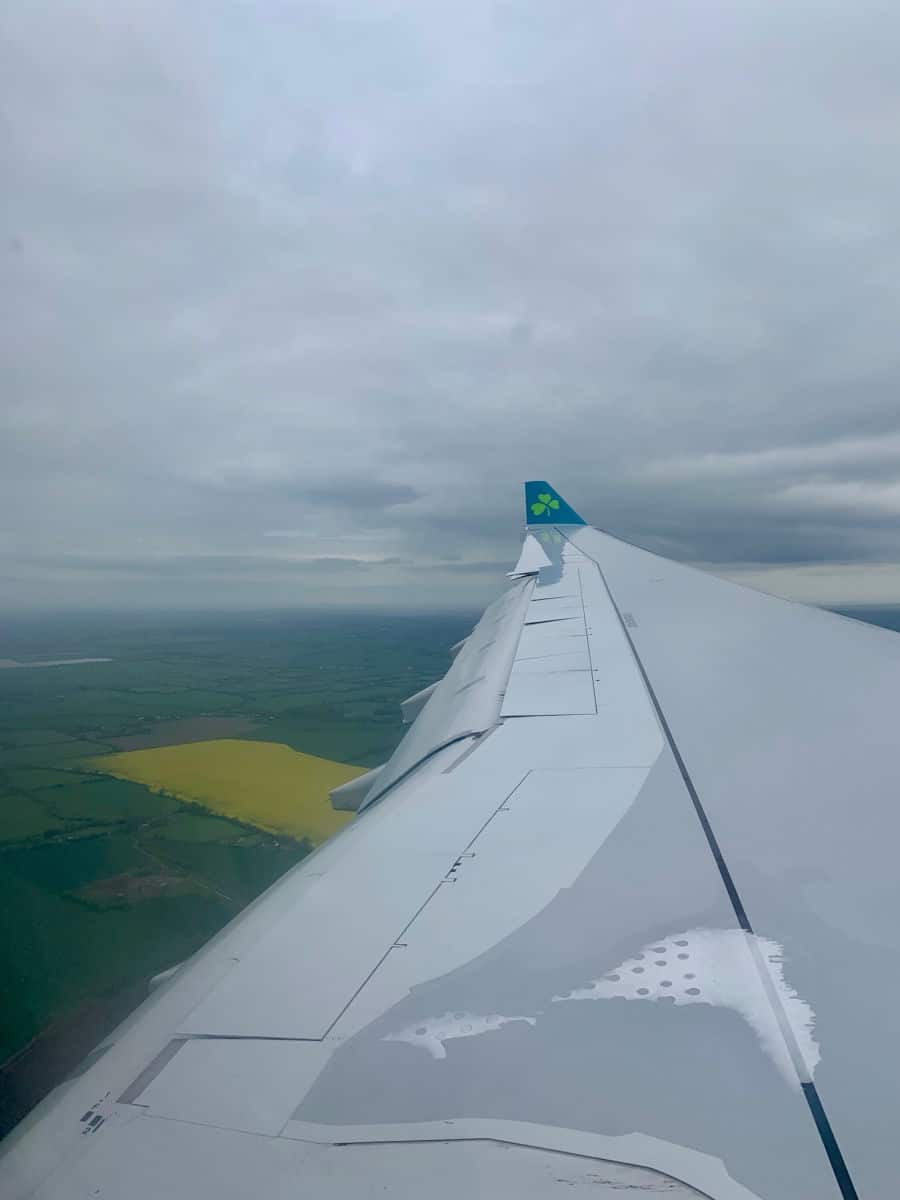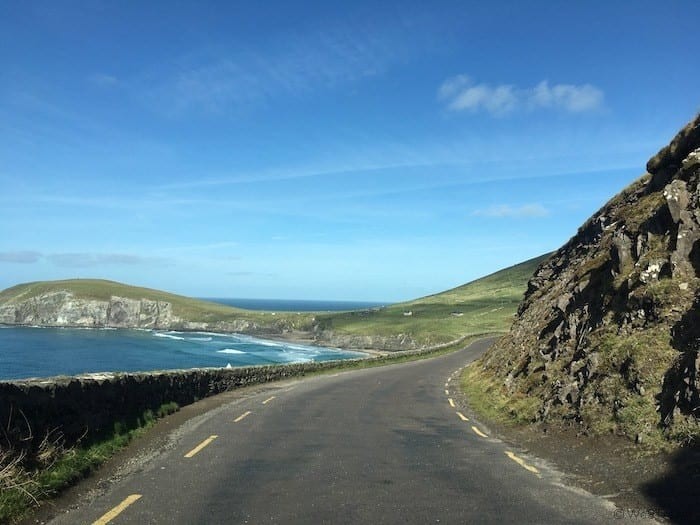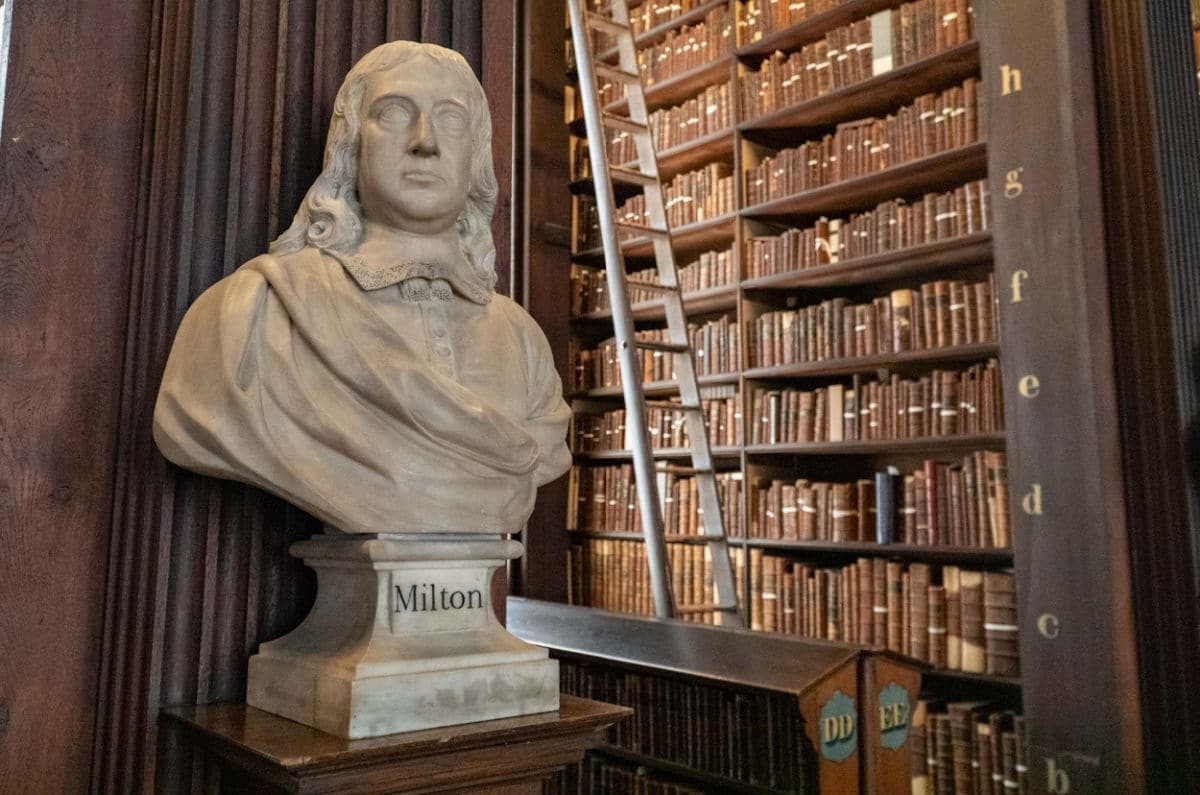Planning a trip to the Emerald Isle? You’re probably wondering, “How Much Does It Cost To Travel To Ireland?” SIXT.VN is here to help you navigate the costs of an unforgettable Irish adventure. We’ll break down everything from flights and accommodation to food and activities, offering tips and tricks to make your dream vacation a reality. Get ready to explore the stunning landscapes and rich culture of Ireland without breaking the bank, while also considering services for Airport Transfers and Hotel bookings for a smooth and enjoyable experience.
1. Understanding the Allure of Ireland for Travelers
Ireland, with its rolling green hills, dramatic coastlines, and vibrant cities, has long captivated the hearts of travelers. But what makes it such a desirable destination?
- Rich History and Culture: From ancient castles and monastic sites to lively pubs with traditional music, Ireland’s history and culture are deeply ingrained in its landscape and people.
- Stunning Natural Beauty: The Cliffs of Moher, the Ring of Kerry, and the Giant’s Causeway are just a few examples of Ireland’s breathtaking natural wonders.
- Friendly Locals: The warmth and hospitality of the Irish people are legendary, making visitors feel welcome and at home.
- Accessibility: Ireland is relatively easy to reach from North America and Europe, with numerous direct flights available.
2. Defining Your Travel Style and Budget for Ireland
Before diving into the specifics of cost, it’s crucial to define your travel style and budget.
- Budget Traveler: You’re looking for affordable accommodation, transportation, and activities, prioritizing experiences over luxury.
- Mid-Range Traveler: You’re comfortable spending a bit more for comfort and convenience, seeking a balance between affordability and quality.
- Luxury Traveler: You’re willing to splurge on high-end accommodation, private transportation, and exclusive experiences.
Your travel style will significantly impact your overall budget. Be realistic about what you can afford and prioritize the experiences that are most important to you.
3. Breaking Down the Key Costs of a Trip to Ireland
Let’s examine the primary expenses you’ll encounter when planning your trip to Ireland:
3.1. Flights to Ireland: Finding the Best Deals
Airfare is typically one of the most significant expenses. According to Expedia, booking flights 2-3 months in advance can often lead to better deals.
- Average Cost: $500 – $1200 (round trip from North America or Europe), varying based on season and airline.
- Tips for Saving:
- Travel during the shoulder season: Spring (April-May) and fall (September-October) offer pleasant weather and lower prices.
- Be flexible with your dates: Flying mid-week or on less popular days can save you money.
- Consider budget airlines: Aer Lingus, Play Airlines and Norse Airlines often have competitive fares.
- Fly into Shannon Airport: As mentioned before, Shannon can save on flights and internal travel.
- Use flight comparison websites: Sites like Google Flights, Skyscanner, and Kayak help you find the best deals.
- Set up fare alerts: Track prices and receive notifications when fares drop.
 Aer Lingus wing photo
Aer Lingus wing photo
3.2. Accommodation in Ireland: From Hostels to Castles
Accommodation options in Ireland cater to every budget, from budget-friendly hostels to luxurious castle hotels.
- Average Cost (per night):
- Hostels: $30 – $50
- Guesthouses/B&Bs: $80 – $150
- Hotels (3-4 star): $150 – $300
- Castle Hotels: $500+
- Tips for Saving:
- Consider staying in guesthouses or B&Bs: These offer a more authentic Irish experience and often include breakfast.
- Book in advance: Secure the best prices and availability, especially during peak season.
- Look for deals on hotel booking websites: Explore options on Booking.com, Expedia, and Hotels.com.
- Consider alternative accommodation: Airbnb and VRBO offer apartments and houses for rent, which can be cost-effective for families or groups.
- Stay outside city centers: Accommodation in smaller towns and villages is often cheaper.
- Consider premier castle hotels sister properties: Like the Inn at Dromoland Castle and the Lodge at Ashford Castle.
3.3. Transportation in Ireland: Renting a Car vs. Public Transport
Getting around Ireland requires careful consideration. Renting a car offers flexibility, but public transportation can be more budget-friendly.
- Car Rental:
- Average Cost (per day): $40 – $80 (including insurance)
- Pros: Freedom to explore at your own pace, access to remote areas.
- Cons: Can be expensive, driving on narrow roads can be challenging.
- Public Transportation:
- Trains: Irish Rail offers a network of trains connecting major cities and towns.
- Buses: Bus Éireann provides extensive bus services throughout the country.
- Leap Visitor Card: This card offers unlimited travel on Dublin’s public transport network.
- Pros: More affordable than renting a car, convenient for city travel.
- Cons: Limited routes, can be time-consuming.
- Tips for Saving:
- Compare car rental prices: Use websites like Auto Europe to find the best deals.
- Book your rental car in advance: Secure lower rates and ensure availability, especially during peak season.
- Consider a smaller car: These are cheaper to rent and easier to maneuver on narrow roads.
- Factor in fuel costs: Gas prices in Ireland are relatively high.
- Evaluate your itinerary: If you’re primarily visiting cities, public transportation may be sufficient.
 Dingle peninsula road
Dingle peninsula road
3.4. Food and Drink in Ireland: From Pub Grub to Fine Dining
Food and drink costs can vary widely depending on your preferences.
- Average Cost (per day):
- Budget: $30 – $50 (picnics, pub lunches, affordable restaurants)
- Mid-Range: $60 – $100 (mix of casual and more upscale dining)
- Luxury: $120+ (fine dining, gourmet experiences)
- Tips for Saving:
- Take advantage of free breakfasts: Many hotels and B&Bs include breakfast.
- Eat lunch at pubs: Pubs often offer affordable lunch specials.
- Shop at local markets: Buy fresh produce, cheese, and bread for picnics.
- Cook some of your own meals: If you’re staying in an apartment or house with a kitchen.
- Look for early bird menus: Many restaurants offer discounted prices for early diners.
- Drink local: Opt for Irish beers and ciders, which are often cheaper than imported options.
- Take full advantage of the local food movement: Allocate $20-30 per person for dinner, more if you indulge in a fine dining restaurant (particularly in hotels.)
3.5. Activities and Attractions in Ireland: Free and Paid Options
Ireland offers a wide range of activities and attractions, from free outdoor adventures to paid historical sites and cultural experiences.
- Average Cost (per day):
- Budget: $10 – $30 (mostly free activities, a few paid attractions)
- Mid-Range: $40 – $70 (mix of free and paid activities)
- Luxury: $80+ (private tours, exclusive experiences)
- Tips for Saving:
- Take advantage of free activities: Hiking, visiting beaches, exploring parks and gardens.
- Look for free admission days: Some museums and historical sites offer free admission on certain days.
- Purchase a Heritage Card: This card provides access to many of Ireland’s historical sites.
- Book tours and activities in advance: Secure better prices and ensure availability.
- Consider a falconry course, an archery lesson, or maybe an Irish dancing class: For private experiences, expect to pay about $300-500 for these half-day activities.
 Long Room Library at Trinity College
Long Room Library at Trinity College
4. Creating a Sample Budget for a 7-Day Trip to Ireland
To give you a clearer picture of potential costs, here’s a sample budget for a 7-day trip to Ireland for one person:
| Expense | Budget Traveler | Mid-Range Traveler | Luxury Traveler |
|---|---|---|---|
| Flights | $600 | $800 | $1200 |
| Accommodation | $210 | $700 | $2100 |
| Transportation | $150 | $300 | $700 |
| Food & Drink | $210 | $420 | $840 |
| Activities | $70 | $210 | $560 |
| Total | $1240 | $2430 | $5400 |
Important Note: These are just estimates, and your actual costs may vary depending on your travel style, time of year, and specific choices.
5. Unveiling the Hidden Costs of Traveling in Ireland
Beyond the major expenses, there are several hidden costs that can impact your budget:
- Travel insurance: Essential for covering unexpected medical expenses, cancellations, or lost luggage.
- Visa fees: Check if you need a visa to enter Ireland.
- Currency exchange fees: Banks and exchange services charge fees for converting currency.
- Credit card fees: Some credit cards charge foreign transaction fees.
- Tipping: While not always required, tipping is customary in Ireland for good service.
- Souvenirs: Set a budget for souvenirs and gifts.
- Unexpected expenses: Always factor in a buffer for unforeseen costs.
6. Navigating Ireland with SIXT.VN: Your Travel Partner
SIXT.VN can be your reliable partner in planning a cost-effective and enjoyable trip to Ireland. We offer a range of services to simplify your travel arrangements:
6.1. Tailored Travel Consulting Services
- SIXT.VN offers customized travel consulting services to help you design an itinerary that fits your budget and interests.
- Our travel experts can provide personalized recommendations for accommodation, transportation, and activities.
- We can help you find the best deals and discounts to maximize your travel budget.
6.2. Convenient Airport Transfer Service
- Avoid the hassle of public transport or expensive taxis with SIXT.VN’s airport transfer service.
- Our professional drivers will greet you at the airport and take you directly to your hotel.
- Enjoy a comfortable and stress-free start to your Irish adventure.
6.3. Wide Selection of Hotel Options
- SIXT.VN offers a wide range of hotel options to suit every budget and preference.
- From budget-friendly guesthouses to luxurious hotels, we can help you find the perfect accommodation.
- Take advantage of our exclusive deals and discounts on hotels throughout Ireland.
6.4. Curated Tour Packages
- SIXT.VN offers curated tour packages that showcase the best of Ireland.
- Our tour packages include accommodation, transportation, activities, and meals.
- Enjoy a hassle-free and immersive travel experience.
6.5. Flexible Flight Booking Assistance
- SIXT.VN can help you find the best deals on flights to Ireland.
- We work with a network of airlines to offer you a wide range of options.
- Our flight booking assistance service can save you time and money.
7. Crafting a Detailed Itinerary to Optimize Costs in Ireland
A well-planned itinerary is key to controlling your travel expenses. Here’s how to create one:
- Prioritize your must-see attractions: Focus on the experiences that are most important to you.
- Group activities by location: Minimize transportation costs by visiting attractions in the same area on the same day.
- Plan for free days: Incorporate days with mostly free activities, such as hiking or visiting parks.
- Allow for flexibility: Be prepared to adjust your itinerary based on weather or other unforeseen circumstances.
- Research opening hours and admission fees: Avoid wasting time and money on closed attractions.
- Consider day trips: Explore areas outside of major cities with organized day trips.
8. Mastering the Art of Saving Money While Traveling in Ireland
Here are some additional tips for saving money while traveling in Ireland:
- Travel in a group: Share accommodation and transportation costs with friends or family.
- Take advantage of free walking tours: Many cities offer free walking tours that provide a great introduction to the area.
- Look for student discounts: If you’re a student, bring your student ID to receive discounts on attractions and activities.
- Pack light: Avoid checked baggage fees by packing only what you need.
- Bring a reusable water bottle: Stay hydrated and save money on bottled water.
- Learn a few basic Irish phrases: Show respect for the local culture and make your interactions more enjoyable.
- Be aware of scams: Protect yourself from common tourist scams.
- Embrace the unexpected: Be open to spontaneous adventures and unexpected discoveries.
9. Addressing Common Concerns and Misconceptions About Travel Costs in Ireland
- Myth: Ireland is an expensive destination. While Ireland can be pricey, it’s possible to travel on a budget with careful planning.
- Myth: You need to rent a car to see Ireland. Public transportation is a viable option for many travelers.
- Myth: You have to stay in expensive hotels. Guesthouses, B&Bs, and hostels offer affordable alternatives.
- Myth: You have to eat in fancy restaurants. Pubs and local markets offer delicious and affordable food.
10. Essential Tips for Budgeting Your Dream Ireland Trip
- Track Your Spending: Use a budgeting app or spreadsheet to monitor your expenses.
- Set Daily Spending Limits: Allocate a specific amount for each day of your trip.
- Be Flexible: Be prepared to adjust your budget as needed.
- Enjoy the Experience: Focus on creating memories, not just saving money.
FAQ: Frequently Asked Questions About Travel Costs to Ireland
1. What is the average daily cost for a trip to Ireland?
The average daily cost for a trip to Ireland ranges from $50 to $150 for budget travelers, $150 to $300 for mid-range travelers, and $300+ for luxury travelers.
2. How much does it cost to rent a car in Ireland?
The average cost to rent a car in Ireland is $40 to $80 per day, including insurance.
3. How much does accommodation cost in Ireland?
Accommodation costs in Ireland range from $30 to $50 per night for hostels, $80 to $150 for guesthouses/B&Bs, $150 to $300 for 3-4 star hotels, and $500+ for castle hotels.
4. How much does food cost in Ireland?
Food costs in Ireland range from $30 to $50 per day for budget travelers, $60 to $100 for mid-range travelers, and $120+ for luxury travelers.
5. What is the cheapest time to travel to Ireland?
The cheapest time to travel to Ireland is during the winter months (November to March), excluding the Christmas and New Year holidays.
6. How can I save money on flights to Ireland?
To save money on flights to Ireland, travel during the shoulder season, be flexible with your dates, consider budget airlines, and use flight comparison websites.
7. What are some free activities to do in Ireland?
Some free activities to do in Ireland include hiking, visiting beaches, exploring parks and gardens, and attending free cultural events.
8. Do I need to tip in Ireland?
Tipping is customary in Ireland for good service in restaurants, pubs, and taxis.
9. How much does travel insurance cost for a trip to Ireland?
The cost of travel insurance for a trip to Ireland depends on your age, health, and coverage needs, but typically ranges from $50 to $150.
10. What currency is used in Ireland?
The currency used in Ireland is the Euro (€).
By carefully planning your trip and utilizing the tips and resources provided by SIXT.VN, you can create an unforgettable Irish adventure without breaking the bank. Discover the magic of the Emerald Isle and experience the warmth and hospitality of the Irish people.
Ready to start planning your dream trip to Ireland? Contact SIXT.VN today for personalized travel consulting, convenient airport transfers, and a wide selection of hotel options. Let us help you create an unforgettable experience that fits your budget and exceeds your expectations.
Address: 260 Cau Giay, Hanoi, Vietnam
Hotline/Whatsapp: +84 986 244 358
Website: SIXT.VN



